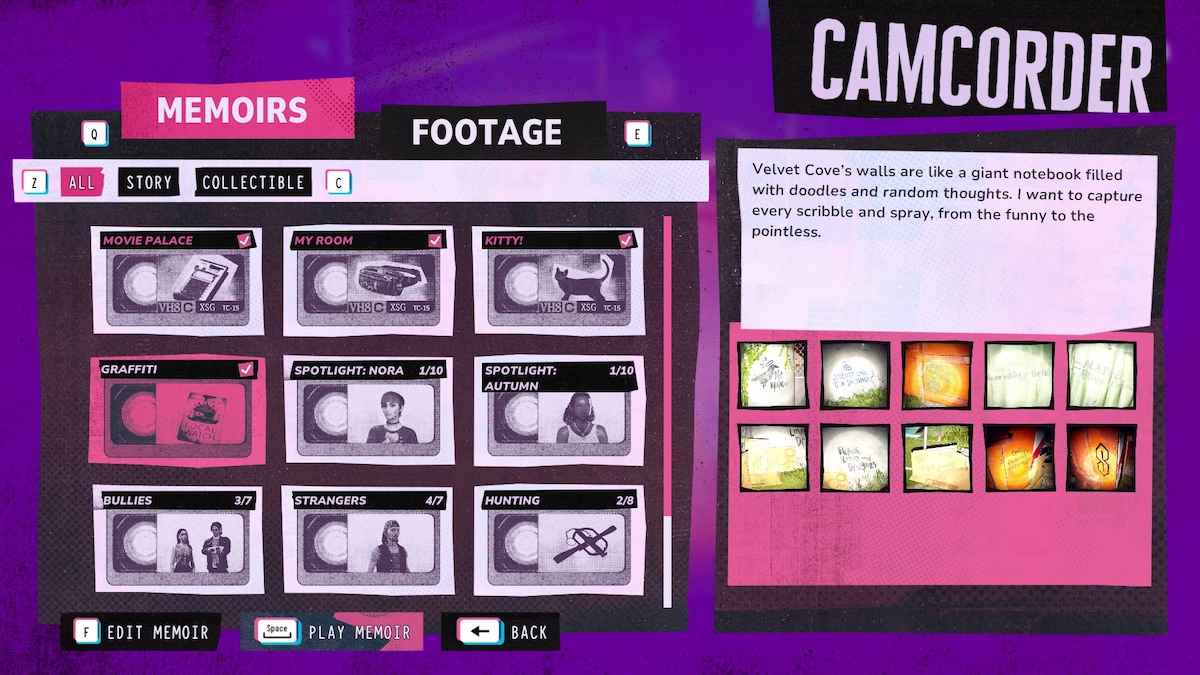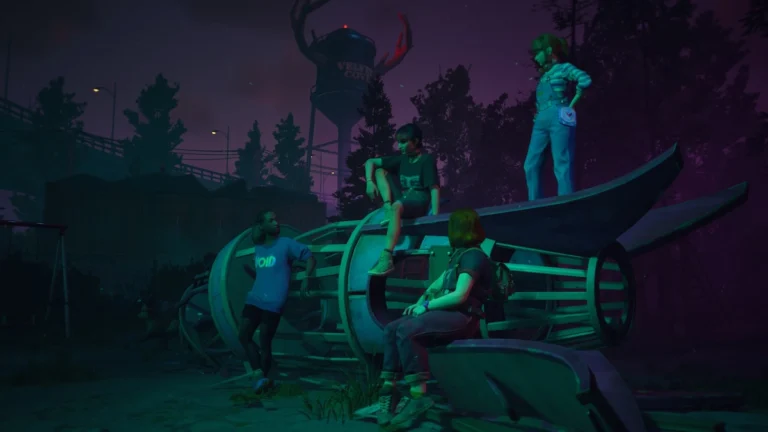Don’t Nod returns with a spiritual follow-up to Life is Strange—and it hits all the right emotional notes.
Ten years after releasing Life is Strange, Don’t Nod has delivered a game that feels spiritually and emotionally closest to that unforgettable experience. Lost Records: Bloom & Rage – Tape 1 isn’t just a nostalgia trip—it’s a heartfelt, grounded journey that blends teenage wonder with quiet heartbreak, imagination with realism. For longtime fans, it feels like coming home.
A Story of Teenage Dreams and Lost Time
Instead of focusing on a duo like Max and Chloe, Lost Records centers around a tight-knit group of four teenage girls—Swann, Nora, Autumn, and Kat—who spend one summer forming a deep bond in the fictional town of Velvet Cove, Michigan. While Velvet Cove doesn’t have the distinct identity of Arcadia Bay, it still evokes a mystical, isolated charm nestled within dense forests. These natural surroundings not only beautify the setting but enhance the atmosphere, making you feel like you’re truly cut off from the world.
Each girl dreams of something more. Autumn and Nora start a two-person punk band, aiming to become rockstars. Kat finds solace in poetry, and Swann—the protagonist—carries a camera, hoping to one day become a filmmaker. There’s something very pure and raw about these dreams. Nora, with her punk aesthetic and emotional complexity, clearly echoes Chloe from Life is Strange, while Swann feels like a quieter, more introverted Max.
Dual Timelines, Two Perspectives
The story unfolds across two timelines—past and present. When playing in the past, you control Swann in third-person as she documents the group’s final summer together. In the present day, however, the perspective shifts to first-person, and interestingly, Swann’s adult face is hidden from view—a subtle but powerful choice that keeps the focus on memory and emotion rather than identity.
This duality serves more than a narrative purpose. It helps create a sense of mystery: why did the friends break their promise never to see each other again? And what happened that summer that led to a decades-long silence?
The Camcorder is the New Polaroid
Swann’s camcorder plays a huge role in both gameplay and story. Just like Max’s Polaroid in Life is Strange, the camera is more than a tool—it’s a window into memory and emotion. You can freely record VHS-style footage of the town, its people, your cat (yes, you name and choose its breed), graffiti, nature, and more. These clips become part of a final film and music video the group is working on.
The recording system is deeply interactive. You can edit your clips, replace old footage, and choose how to compile the final video. The camera also doubles as a flashlight during nighttime sequences, adding another layer of utility.
More Than Just Point-and-Click

Lost Records does more than just tell a story—it lets you live in it. Interacting with objects often gives you deeper insight into the characters. Turning over a trinket might trigger a sound or a memory. Everything you touch feels lived-in and connected to the girls’ lives.
This intimacy is central to the game’s magic. Most scenes revolve around the core group, and the game rarely expands its cast beyond them. But that focus makes every moment matter. Whether you’re in Swann’s bedroom, Nora’s garage, or a mysterious forest cabin, you’re encouraged to wander, discover, and reflect.
Choices That Shape Personality, Not Just Plot
Choice is a major part of the experience, but not in the usual life-or-death way. Don’t Nod opts for quiet impact. Small decisions—like helping Nora pick her next piercing or choosing lyrics for a punk song—don’t shake the story, but they do shape your characters and their relationships.
Even more interestingly, some choices only unlock if you interact with the world more thoughtfully. Looking at a certain person or staying silent long enough can open new dialogue options. There’s no superpower to rewind time here—just human memory and perception guiding your path. It’s subtle. It’s elegant. And it works.
Art, Atmosphere, and Music that Bleed Emotion
Visually, Lost Records is possibly Don’t Nod’s most polished game yet. The art direction balances stylization and realism beautifully, creating striking contrasts between warm daylight and eerie, moonlit forests. Lighting and color are used to emphasize emotion rather than just aesthetics.
Music is central—both in the story and the atmosphere. Nora, Autumn, and even Kat are obsessed with punk, and they channel that love into forming a band named Bloom & Rage. The songs aren’t just background noise—they’re narrative tools that express frustration, longing, and connection.
Minor Technical Hiccups, But Nothing Fatal
Yes, there are limitations. The facial animations and motion capture still fall short of AAA standards. Even with improved lip-syncing, animations occasionally break immersion. But these are minor blemishes on an otherwise heartfelt production from a smaller studio doing more with less.
Slow Burn, Big Payoff
Tape 1 runs for around six to nine hours, depending on how deeply you engage with the environment and video recording system. The pacing is slow—but intentionally so. The first three-quarters focus heavily on character development. Only in the final act does the central mystery begin to take shape.
And when it does? It hits hard. The cliffhanger left me stunned—and hungry for Tape 2. Yes, the game could have moved faster to its core conflict, but I didn’t find a single scene that felt unnecessary. The payoff makes the slow burn worth it.
Final Verdict: A Quietly Powerful Return to Form
Lost Records: Bloom & Rage – Tape 1 might not have supernatural powers or jaw-dropping plot twists every five minutes, but what it does have is heart. A lot of it. It captures the awkward beauty of youth, the magic of friendship, and the pain of time’s passage.
It’s a game about growing up, about making memories—and about losing them. It’s about music, rebellion, and the stories we tell ourselves to survive.
In the end, it’s not just a return to the spirit of Life is Strange—it’s an evolution. One that’s quieter, more personal, and just as unforgettable.
